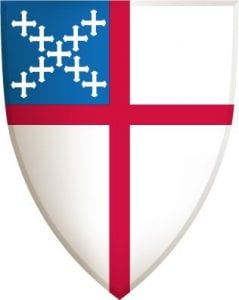Episcopal Funeral Service Rituals
The Episcopal Church in the US is made up of nearly 6,500 parishes or congregations, representing millions of members from a wide range of cultural and ethnic backgrounds. Consequently, we find some differences in the way individual funeral services are held, but, the overall teachings of the Church with regard to death and the afterlife are respected.
In general, Episcopalians believe that through faith in Jesus Christ we find eternal life. This is reflected in the traditional Episcopal funeral. The basis of the service is a focus on the hope of resurrection. The formal liturgy is, in fact, an Easter liturgy and reinforces the principle that as Jesus was raised from the dead, so the deceased will be as well.
The liturgy for the dead is an Easter liturgy. It finds all its meaning in the resurrection. Because Jesus was raised from the dead, we too, shall be raised.
The liturgy, therefore, is characterized by joy, in the certainty that “neither death, nor life, nor angels, nor principalities, nor things present, nor things to come, nor powers, not height, nor depth, nor anything else in all creation, will be able to separate us from the love of God in Christ Jesus our Lord.”
This joy, however, does not make human grief unchristian. The very love we have for each other in Christ brings deep sorrow when we are parted by death. Jesus himself wept at the grave of his friend. So, while we rejoice that one we love has entered into the nearer presence of our Lord, we sorrow in sympathy with those who mourn.
– Book of Common Prayer pg. 507
Burial normally takes place within two or three days of death. The preferred location for an Episcopal funeral is a church or chapel but it is not uncommon for services to be held at a funeral home. The casket is normally closed during the funeral.
A service may also be held at graveside. A viewing, wake, or visitation may be held prior to the funeral and are at the option of the family of the deceased. Interment, led by a priest, follows the funeral and guests are generally welcome to attend. After interment, a funeral reception may be held at a family home, church, or other location.
A typical service, led by a priest, includes readings from the Book of Common Prayer, singing of hymns, a sermon, and one or more eulogies by friends or family members. The casket, urn, or a photo of the deceased will generally be present. The family of the deceased works with a priest to determine the specific Order of Service and decide whether or not Communion will be offered.
A good example of the type of planning and what a typical service will include can be found on the website of Ascension Episcopal Church. Additional information on the liturgy can be found on the website of The Episcopal Diocese of New York.
Funeral practices vary between congregations. Ceremonies may also reflect customs and traditions specific to a geographic location or community. To verify the practices of a particular congregation, consult with a clergy member.
| Episcopal Quick Reference Guide | |
|---|---|
| Length of Service | Depends, generally under an hour |
| Flowers? | Yes (See our Sympathy Flowers) |
| Food? | Inquire |
| Dress Code? (Men/Women) | Dark & Conservative / Men: Jacket & Tie |
| Recording Devices? | No |
| Source of Readings? | The Book of Common Prayer |
| Open Casket? | Rarely |
| Return to Work? (Days) | 7 |
| No. of Days to Mourn? | Depends |
| Embalming? | Accepted |
| Cremation? | Accepted. Remains should be treated as a body would be. |
| Body/Organ Donation? | No official position on full body donation. Organ donation is permitted. |
